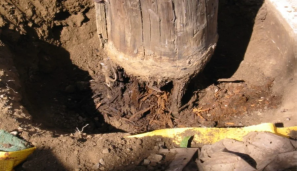Understanding Wood
An estimated 150 million wood poles form the backbone of the electric grid, supporting the delivery of electricity and telecommunications across America. After more than a century of use, wood remains the preferred material for poles because of its durability, strength, low acquisition and lifecycle costs, and availability in multiple lengths and classes.
Without remedial treatment to mitigate decay fungi and insect activity, poles will lose strength which will affect your system safety, performance, and overall resiliency.
Contact your local Osmose professional to learn more.
Decay - Wood's Achilles Heel

Wood poles are susceptible to degradation by a variety of agents, abiotic (non-living), and biotic (living). Abiotic deterioration can be caused by mechanical damage from vehicles and machinery. In addition, ultraviolet light, water, and other environmental factors contribute to depletion of the original treatment.
As the original preservative used to treat the pole depletes over time, the pole becomes susceptible to biotic degradation, better known as decay, which is caused by fungi and insect activity.
In order for decay fungi to thrive, four elements must be present:
A food source (the wood)
Moisture
Oxygen
Heat

Today’s economic conditions combined with environmental concerns and ever-growing regulatory mandates place a great burden on pole owners to maximize the safe use of their existing wood poles. A proactive approach to wood pole contractual maintenance that can produce many positive outcomes, including:
- Improved safety (and subsequently improved customer relations)
- Extended service life and improved reliability
- Improved resiliency – a well-maintained, strengthened system can dramatically decrease outages and improve recovery time following severe weather events
- Greater efficiencies in the pole replacement process and reduced replacement costs
Osmose can help you optimize your life-extension investments by matching your program objectives with an appropriate inspection method.
To learn more, visit the Inspection & Life Extension section of our website or call your local Osmose experts. Not sure who your local professional is? Email poleinfo@osmose.com to find out.
.png?width=243&name=Osmose-logo-(white).png)